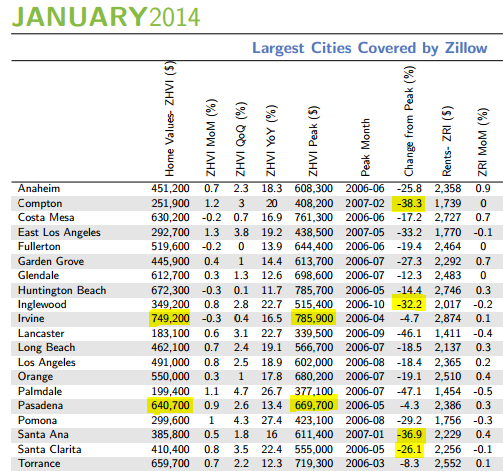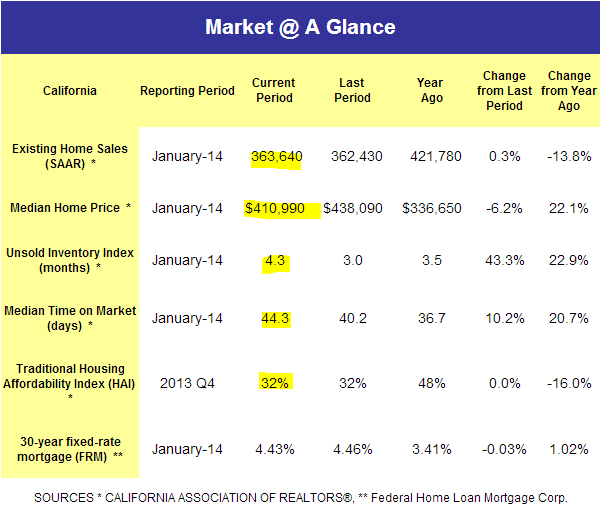On March 4th, 2014 China experienced it’s first ever onshore default when Shanghai Chaori Solar Energy Science & Technology Co. failed to pay full interest on its bonds. Signaling two things. 1. Chinese government is no longer interested in bailing out (most) Chinese companies and 2. A lot more defaults to come. Here is where China is today.
- $21 Trillion Debt Mountain. Roughly the same size as the entire US Banking Sector. It took the US 220 years to get to that number, it took China just 5 years of explosive credit growth.
- $6 Trillion In Shadow Banking. Actually, no one knows how large this number is. I have read good data/reports putting this number at $10-15 Trillion range.
- Empty cities, shopping centers, massive speculative bubble in real estate, built out infrastructure, rising cost of labor and export driven economy.
With massive debt burden, increasing borrowing costs and an upcoming bear market/recession in the US/Worldwide (2014-2017), shit is about to get real.
Did you enjoy this article? If so, please share our blog with your friends as we try to get traction. Gratitude!!!

Click here to subscribe to my mailing list
Chinese Companies Skidding Towards Default. What’s Next? Google

China Heralding $1.5 Trillion Emerging Debt Wall: Credit Markets
A surge in interest rates and the worst currency rout since 2008 in developing nations from Russia to Brazil are inflating corporate borrowing costs as $1.5 trillion of obligations come due by the end of 2015.
Companies in the MSCI Emerging-Market Index (EEM) are facing the highest debt loads since 2009 as profit marginsnarrow to the least in four years, according to data compiled by Bloomberg. More than 36 percent of bonds and loans by Turkish companies will mature by 2015, while Chinese firms need to pay off $630 billion, or 29 percent, of their borrowings just as the country experiences its first-ever onshore corporate-bond default.
Even as higher rates help shrink trade deficits and stabilize currencies, they are damping emerging-market economic growth, eroding corporate profits and curbing bank lending. That’s increasing the cost to refinance debt for companies from Yasar Holding AS, the Turkish maker of Pinar dairy products and DYO paints, to Brazilian sugar and ethanol producer Grupo Virgolino de Oliveira SA.
“Tightening interest rates in a bad economic cycle exacerbates the stress,” Michael Shaoul, New York-based chairman and chief executive officer of Marketfield Asset Management LLC, which oversees $21 billion, said in a March 5 telephone interview. “If economic and credit conditions start to fall apart, then how can you refinance your existing bonds?”
Junk Bonds
That stress is already being reflected by a jump in bond yields. Investors demanded 166 basis points, or 1.66 percentage points, more to hold non-investment grade debt of developing-country companies than their global peers, Bloomberg data show. The premium jumped from 34 basis points a year earlier and reached a 16-month high of 172 basis points on Jan. 31.
In China, Shanghai Chaori Solar Energy Science & Technology Co. failed to pay full interest on its bonds, leading to the first default in the nation’s onshore bond market and signaling the government will back off its practice of bailing out companies with bad debt.
The maker of energy cells to convert sunlight into power is trying to sell some of its overseas solar plants to raise money to repay the debt, Vice President Liu Tielong said in an interview today at the company’s Shanghai headquarters.
Policy makers have reined in credit expansion, helping boost the yields on three-year AAA-rated corporate bonds to 6.26 percent in January, the highest since at least 2010, according data compiled by ChinaBond, the nation’s biggest debt clearing house.
Rate Increases
Russia’s central bank unexpectedly raised its benchmark interest rate 150 basis points to 7 percent on March 3, joining central banks in Brazil, Turkey, India and South Africa in raising borrowing costs to stem their currency declines this year. Brazil’s real has retreated 24 percent over the past two years, increasing their foreign debt payments in local currencies. Turkey’s lira, India’s rupee and Russia’s ruble each tumbled 18 percent.
Interest-rate increases may slow emerging-market economic growth to the weakest expansion since 2008, increasing the financial risks for banks and corporates, economists led by Dominic Wilson at Goldman Sachs Group Inc. wrote in a note on Feb. 19. Emerging-market economies grew 4.5 percent in 2013, the slowest since the 4.45 percent expansion during the 2008-2009 credit crisis, according to the International Monetary Fund.
‘Less Room’
Gross debt in companies in the MSCI emerging-market index amounted to 2.93 times earnings before interest, taxes, depreciation and amortization in February, up from 1.46 times in June 2009, Bloomberg data show. Profit margins declined to 7.81 percent from 8.34 percent in December and 10.35 in March 2011.
“We’ve moved into this environment where weaker growth in emerging markets, slower credit growth and compressed corporate margins give them less room to absorb higher costs,” Vanessa Barrett, a credit strategist at Morgan Stanley in London said in a phone interview on Feb. 6. “That certainly will challenge the debt servicing capabilities of emerging-market corporates.”
Morgan Stanley recommends its clients sell emerging-market bonds and currencies, predicting non-performing loans for Brazilian banks may increase to 5 percent from 3 percent.
Fitch Ratings Ltd. warned in January that almost 1 trillion rupees ($16.2 billion) of Indian bank loans are at risk of souring as companies’ ability to generate cash and service debt deteriorates.
Yasar Maturity
Turkish companies including Yasar, which owns everything from meat and dairy producers to fisheries businesses, and Dogan Yayin Holding AS, a media conglomerate, may have their credit outlook cut to “negative” after the lira weakened, Fitch said Feb. 14.
Yasar has $250 million of speculative-grade notes maturing in October 2015. More than 70 percent of Yasar’s debt is denominated in foreign currencies, while most of its revenue is generated in the lira, according to Fitch. Should the local currency decline further, Yasar’s net debt will rise beyond 4.5 times Ebitda, the upper limit for the B rating assigned by Fitch, the ratings firm said in a report on March 3. The company’s leverage was 4.4 times earnings in 2012.
The company’s 9.625 percent, dollar-denominated notes due next year were yielding 11.9 percent last month in trading on Trace, the bond-price reporting system of the Financial Industry Regulatory Authority.
Virgolino de Oliveira
A telephone call to Yasar’s finance department wasn’t returned and Murat Dogu, vice president at Dogan responsible for finance and capital markets, didn’t respond to calls and e-mails seeking comment.
Bonds sold by Brazil’s Virgolino de Oliveira tumbled this year as Standard & Poor’s said lower sugar prices and higher interest rates may it more difficult to refinance its “sizable” short-term debt. The $300 million of debt due in 2018 fell to 56 cents on the dollar from 80 cents in November.
Virgolino is seeking financing in the international market and is getting “a very good response,” Chief Financial Officer Carlos Otto Laure said in a telephone interview on Feb. 28.
Companies in emerging markets went on a borrowing binge following the crisis five years ago as central banks cut rates to spur economic growth.
Private credit growth in each of China, Brazil and Hong Kong was more than 60 percent of their GDP since 2008. That’s second only to Ireland, at about 90 percent, among major countries tracked by Deutsche Bank AG.
Maturity Wall
Companies in the 20 largest developing countries have $808 billion debt maturing this year and another $645 billion coming due in 2015, Bloomberg data show.
Turkey has about $36 billion in debt and loans coming due. About 86 percent of the borrowings are denominated in foreign-currencies, making them more expensive as the lira’s value declines.
Russia’s companies need to pay off $142 billion in debt within two years, accounting for 25 percent of the total, Bloomberg data show.
Borrowing costs are still low compared with three years ago. Yields on dollar-denominated corporate bonds traded at 5.21 percent, down from a peak of 7.35 percent in October 2011, according to Bloomberg Emerging Market Corporate Bond Index.
Boom-to-Bust
“Higher refinancing cost alone is usually not sufficient to cause a ‘meltdown’,” Zsolt Papp, a money manager who helps oversee $2.6 billion of emerging-market debt at Union Bancaire Privee in Zurich, said in an e-mail on Feb. 21. “It would have to be coupled with a collapse in the economy and no access to credit, basically a 2008-2009 scenario. And that looks not likely.”
Capital is becoming less available, making it more difficult for companies to roll over their maturing debt. Global investors pulled $11 billion out of emerging-market bond funds this year through Feb. 26, already approaching the full year outflow of $14 billion in 2013, according Barclays Plc.
A “multi-year elongated EM cycle of underperformance” is likely as the credit and economic growth slows, according to Alan Ruskin, the global head of Group of 10 foreign exchange at Deutsche Bank in New York.
“A rapid increase of credit tends to associate with boom turning into bust,” Ruskin said in a phone interview on Feb. 21. “In an environment where there’s excess of credit, a slowing economy feeds on itself as assets go down and the banking system starts to decline. When financial markets seize on a theme, then things can accelerate.”













